动物行为类型及进化意义
作者:陈凤 武汉新航道北美考试院托福听力讲师。毕业于北京工业大学,留学荷兰,以优异成绩通过英语专业八级。授课风格轻松自然,富有亲和力,极具耐心,擅于挖掘学生真、善、美的一面,引发学生对英语的兴趣,深受学生喜爱。热爱英语教学,授课经验丰富,带出众多高分学员。
自然界的动植物种类繁多,他们的外形和身体构造各不相同,导致了动植物行为丰富多彩,千姿百态。随着地球环境的变化,他们的行为也随着环境的变化而逐渐改变。动植物的各种行为对动植物个体和族群的生存繁衍都十分重要。
纵观托福考试,对这一自然界的重要组成部分也表现出了极大的兴趣和关注,2016年度听力讲座中,“动植物及其行为介绍”主题的讲座出现频率为所有类别之最,同时也占据了自然科学(讲座四大类别之一)72%的比例。放眼2017年的托福考试,“动植物及其行为介绍”依然会在考试中占有十分重要的地位。下面我们就来介绍一下动物的行为以及这些行为在进化上有何重要意义,并在文章末尾列出了TPO出现的所有动物相关的讲座篇章,以及相关词汇。
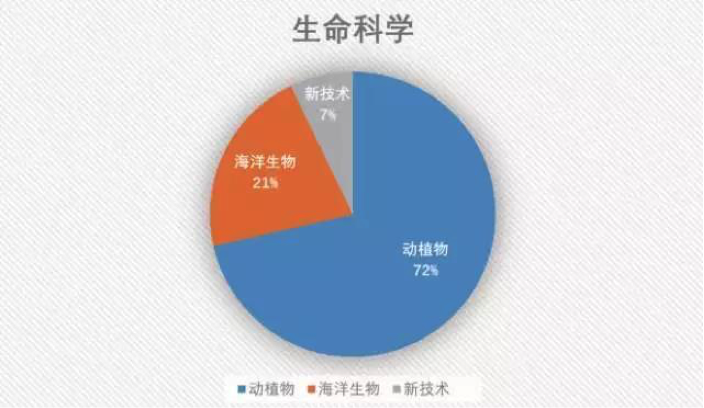
动物行为指的是动物的体态、发声和其他所有外部可以识别的变化。从类型上来分,有取食行为、领域行为、攻击行为、防御行为、繁殖行为、节律行为和社群行为。
取食行为feeding behavior指的是动物获取食物forage和处理食物有关的活动。
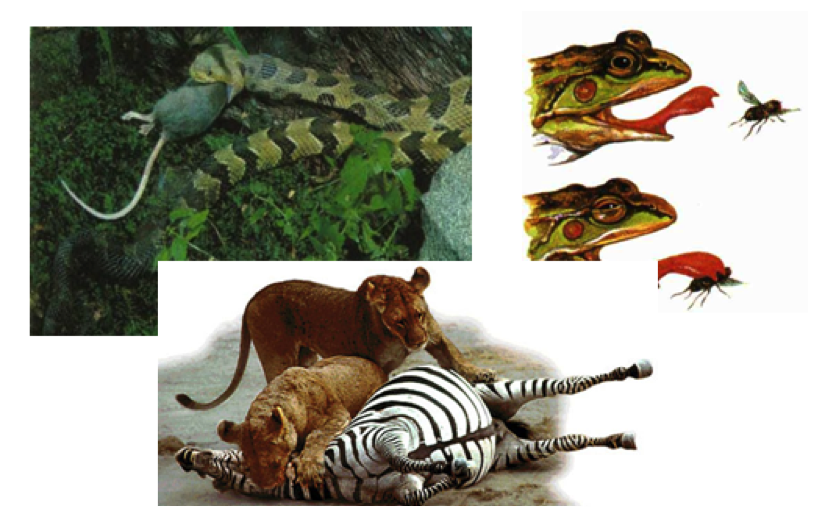
有些动物获得食物后无法一次性消耗完,因此很多动物还会储藏食物的行为caching behavior, 以此度过食物稀少的时期,尤其是寒冬的时候。例如,红狐狸会把吃剩的食物埋在树林里,等饿了再回来吃,但有时候食物会被别的动物发现吃掉,有时候红狐狸自己也会忘记食物地点。猎豹在在获得食物后往往只能吃一小部分,比如羚羊这种动物,它无法一次吃完,的方法就是把它拖到树上藏好。这样土狼这些饥饿的对手就偷不到。
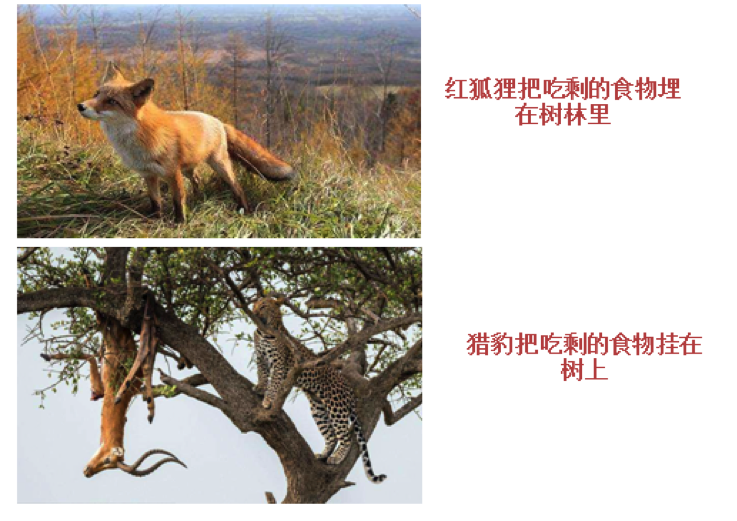
动物觅食和贮存食物供自己及自己的后代享用而让自己生存下来,是动物最基本的行为方式。
【经典讲座】: TPO16 Lecture 3Foraging Behavior Among Bea 河狸的觅食行为
【词汇小结】:
取食行为feeding behavior
觅食 forage
贮食行为 caching behavior
红狐狸 red fox
猎豹 cheetah
领域行为 Territorial Behavior指动物占领一定的空间范围,排斥其他同种个体进入invade的行为。例如,非洲狮和东北虎都具有领域行为,狗撒尿来标记领地,也是种领域行为。动物占有一定的领域后可以不受限制的使用它的资源,如食物、配偶等,给动物的繁殖和抚育下一代提供了一个安全的区域,避免与同类的其他成员竞争,可以减少冲突conflict、保证食物和繁衍reproduction。
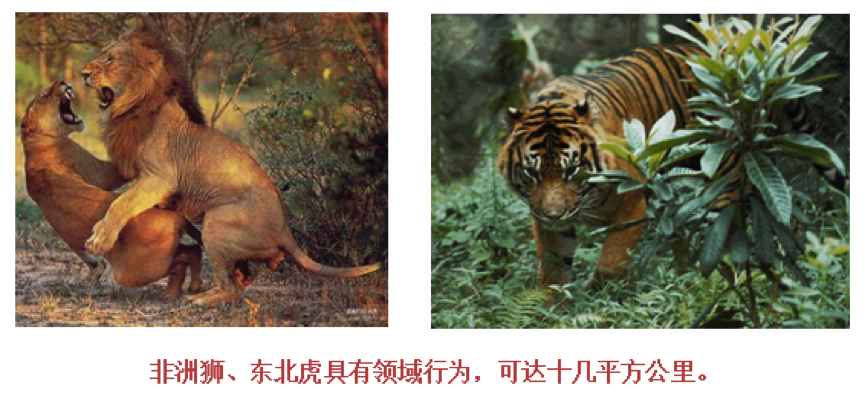
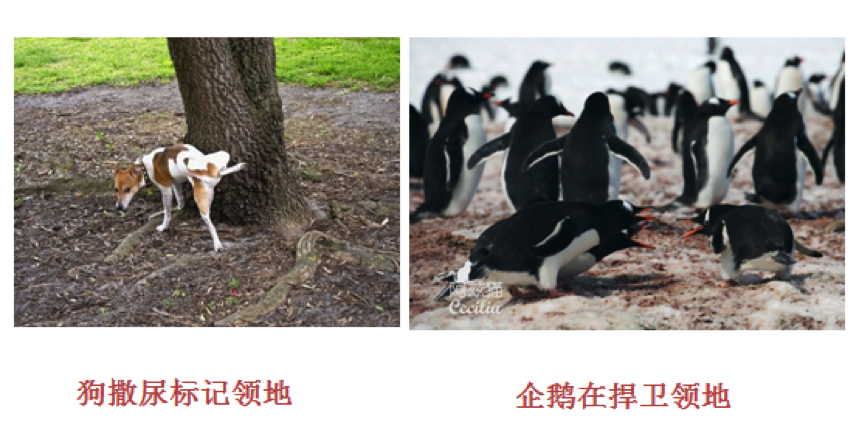
【词汇小结】:
领域行为 Territorial Behavior
入侵 invade
冲突 conflict
繁衍 reproduce/reproduction
非洲狮 African lion
东北虎 Siberian tiger
企鹅 penguin
攻击行为Aggressive Behavior指动物为了争夺资源,如食物、配偶、领域等,所表现出的行动(包括威胁threaten/frighten、妥协compromise、各种格斗fight等)。动物有两种斗争模式,即鹰式hawk和鸽式dove, 前者会打到底,后者则是打不过就跑,在动物界,鹰概率约为8/13, 鸽概率约为5/13,这是进化上比较稳定的模式。
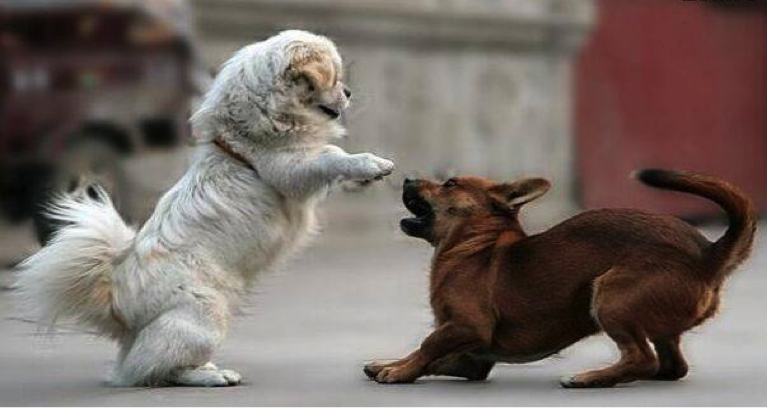
另外相同物种之间的斗争往往有一个重要的特点,那就是斗争虽然非常激烈,但是互相之间很少受到致死性伤害,具有一定的“绅士风度”。比如两只狗打架,一般失败者不会继续逞强,而是弯下颈部认输。动物们从最初你死我活的斗争逐渐变成有节制的斗争。这么做可以避免彼此受到重伤,对于动物维持个体生存和种族延续都是十分有利的。
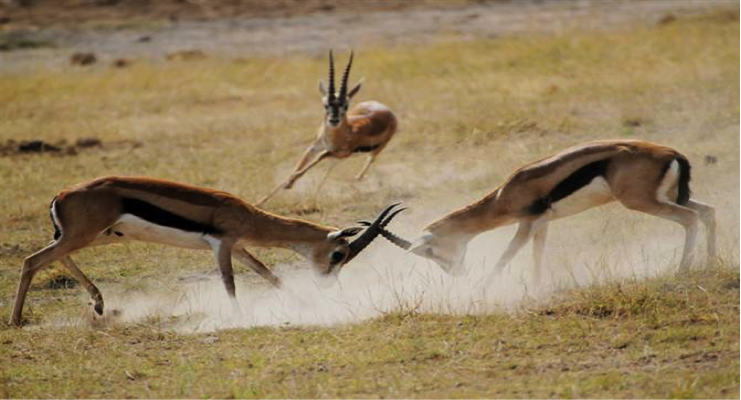
有些动物同时受两个动机支配时,会表现出特别的行为。比如,当两只敌对的银鸥在它们领域边界的交界处相遇时,常常是既想攻击对方又因害怕想逃避对方, 结果双方都没有表现出攻击行为,而是一只雄鸥在用力拔草,另一只则在梳理羽毛。这种行为也叫动物的转移行为displacement。
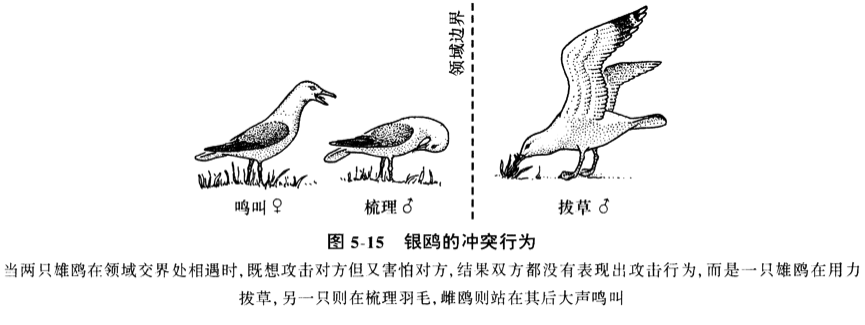
另外在动物中还存在一种利他行为Altruistic Behavior,这种行为对其他个体有利而对个体本身不利,甚至有害。比如处于社会生活的昆虫分类3类:工虫 female worm(不孕性雌虫)、虫后 queen(负责生育的雌虫)和雄虫 king。绝大多数雌虫自己不产卵,而自愿选择照顾虫后所产的卵。这种行为看似对个体不利,为什么还会存在呢?从基因进化的角度来讲,如果某种基因能增加个体的适应性,使后代存活率增加,这种基因在种群中出现的频率就会增加。利他行为能使与它相关的基因在群体内频率增加并被保存下去,符合自然选择,因此被保留。
【经典讲座】:TPO4 Lecture 1Displacement Activity 动物的转移行为
【词汇小结】:
攻击行为Aggressive Behavior
威胁threaten/frighten
妥协compromise
格斗fight/battle
利他行为Altruistic Behavior
转移行为 displacement activity
防御行为Defensive Behavior指的是动物保护自己、防御敌害的行为。比如猫头鹰会拟态,蜥蜴断尾逃跑,变色龙变色,刺猬遇到危险会把自己卷成一个球,乌龟遇险把头缩进龟壳里,黄鼬会释放臭气逃跑,乌贼释放墨汁等等。
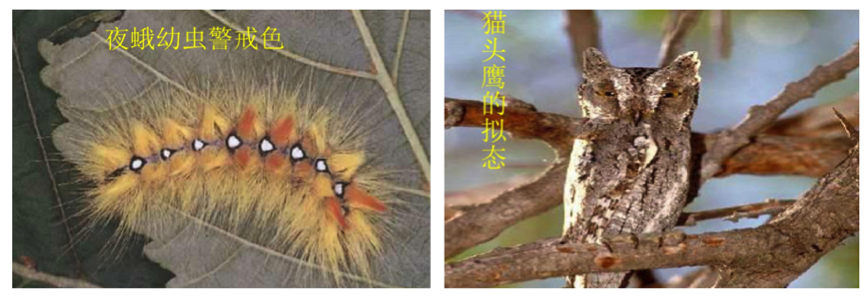
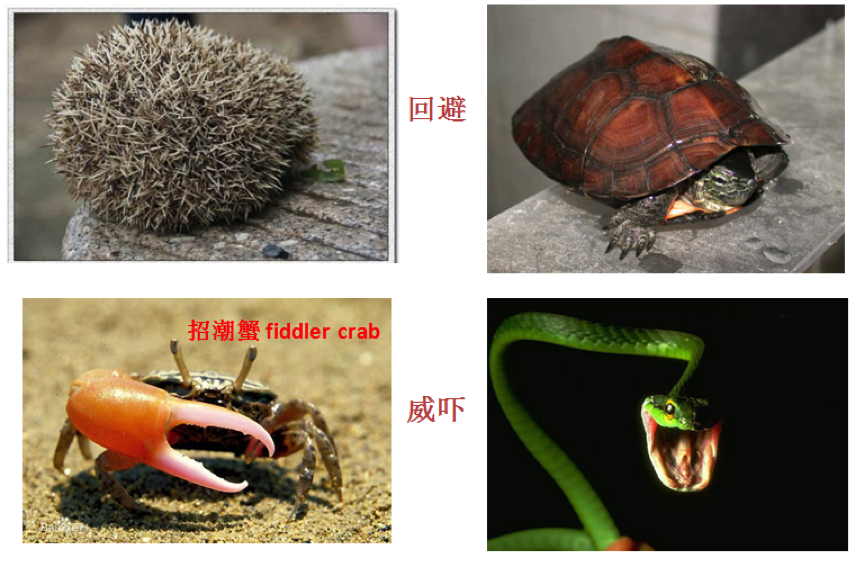

动物的这些防御行为对于他们生存和繁衍都至关重要。
【经典讲座】:TPO17 Lecture 4 Octopus 章鱼的自卫手段
【词汇小结】:
防御行为Defensive Behavior
回避 avoidance
夜蛾 noctuid
猫头鹰 owl
蜥蜴 lizard
变色龙 chameleon
刺猬 hedgehog
乌龟 tortoise
黄鼬 yellow weasel
招潮蟹 fiddler crab
乌贼(八抓鱼)octopus
乌鸦 crow/raven
繁殖行为Reproductive Behavior包括动物识别雌雄、占有繁殖空间、求偶、交配、孵卵和哺育子女等行为。在狮群中,狮子是可以通过外表来分辨雌雄的,因为猫科动物里只有狮子是群居的,为了一眼就能识别性别,雌雄异形是最有效的办法。雄狮有很长的鬃(zong)毛,鬃毛越长,颜色越深,在母狮子眼里就越帅气。鸟类筑巢则是一种占有繁殖空间的行为。孔雀开屏多半是为了求偶。
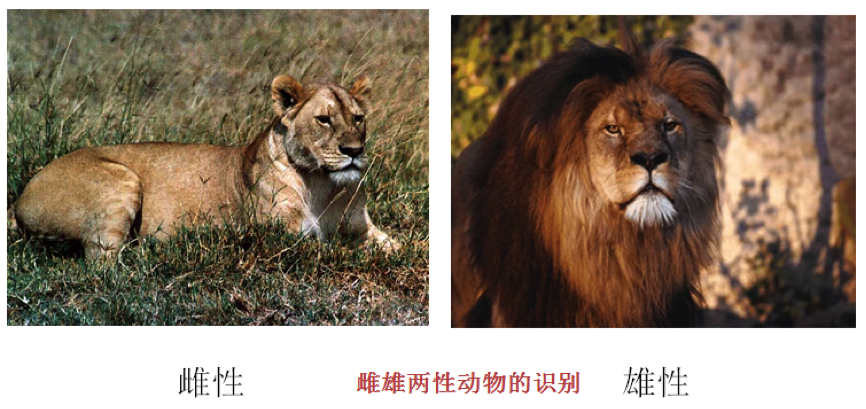
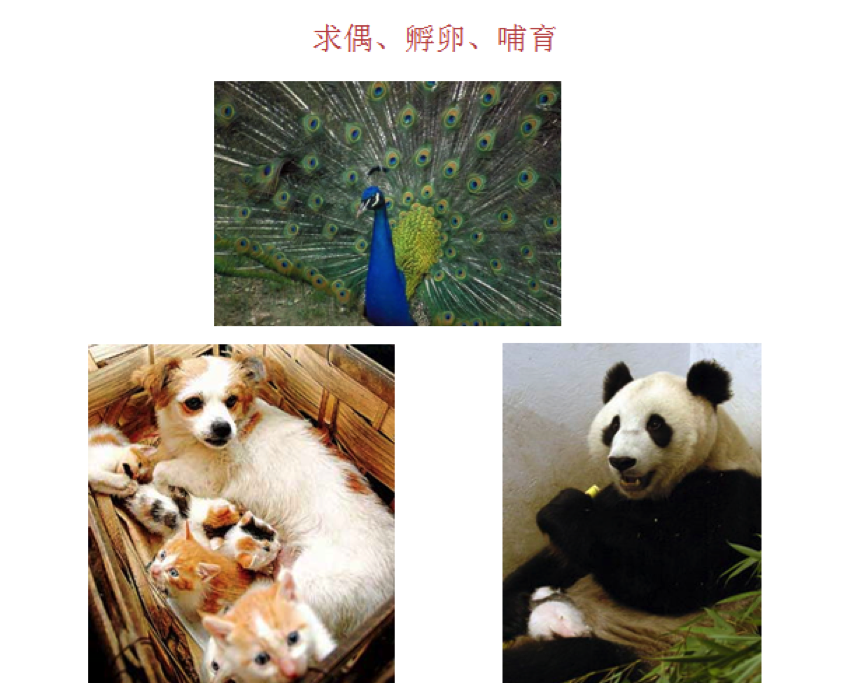
李白的诗篇《下江陵》中有诗云,“两岸猿声啼不住,轻舟已过万重山”,指的就是猿的求偶行为。动物的繁殖行为使动物的后代数量增加,有利于种群的繁盛。
【经典讲座】:TPO11 Lecture 1 Distraction Display 鸟类的护雏方式
【词汇小结】:
繁殖行为Reproductive Behavior
雌性 female
雄性 male
求偶 courtship
交配 mate
孵化 hatch/incubate
哺育 feed
筑巢 nest
鬃毛 mane
狮子 lion
孔雀 peacock
熊猫 panda
猿 ape
节律行为Rhythmic Behavior指动物周期性和有节律的行为,主要包括潮汐节律tidal rhythm、月节律lunar rhythm、日节律daily rhythm和年节律circannual rhythm。生活在潮汐带的很多动物具有与潮水涨落相一致的生活周期,这个就是潮汐节律。招潮蟹fiddler crab低潮时从洞内爬出来觅食和求偶,涨潮前退回洞内。招潮蟹随着潮水的涨落安排自己的生活节奏,可谓潮退而出,潮涨而归。除此以外,它们还能准确无误的日夜变色。每一天,招潮蟹的体色都会随白天黑夜交替变化。每当夜晚,其体色变浅,白天则深而鲜艳。
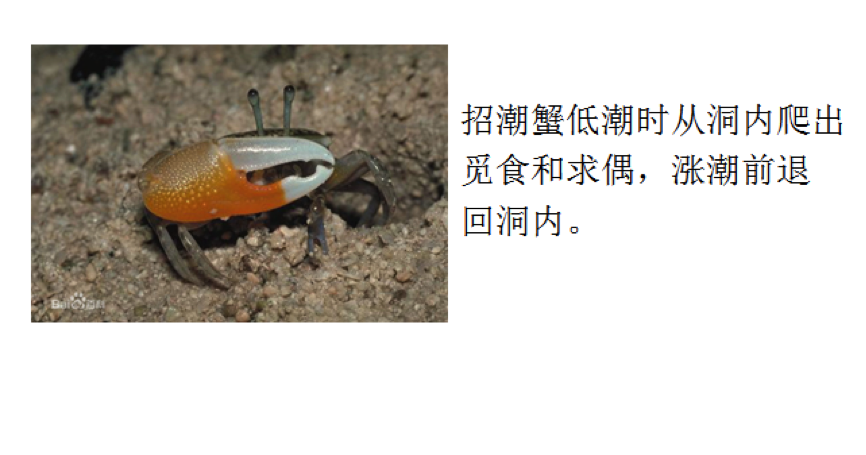
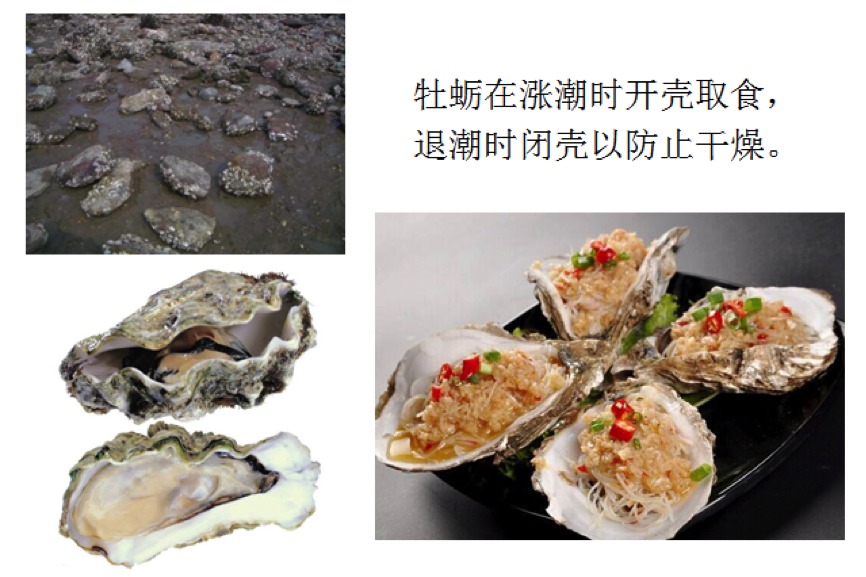
有些生物大约每隔24小时就出现一次周期性节律,这种活动、生理机能与地球的昼夜相联系,称为日节律或者昼夜节律,比如蜂、蝶、鸣禽等都属于昼行性diurnal动物,鼠、蝙蝠、猫头鹰等则属于夜行性nocturnal动物。
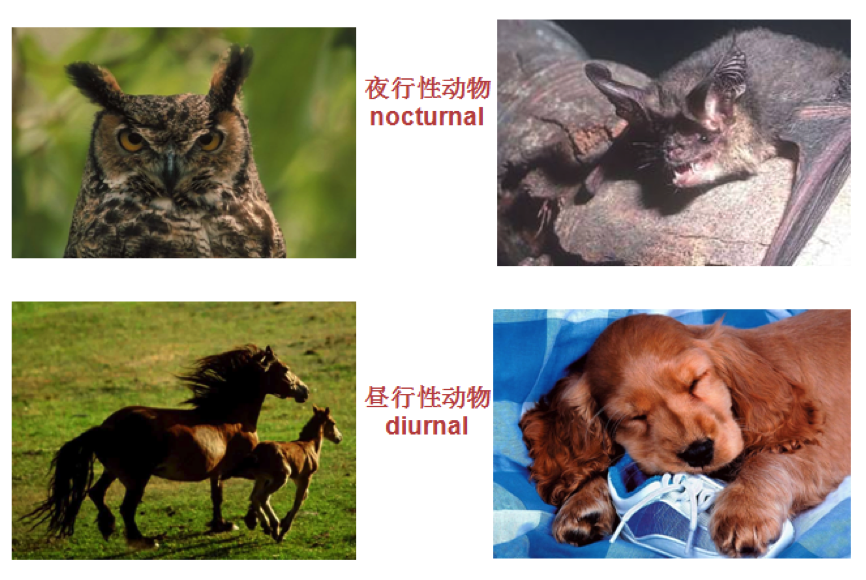
许多鸟类在冬季来临之前迁往南方温暖的地区越冬,两栖类amphibian、爬行类动物reptile到冬季都有冬眠hibernation的行为,某些海洋鱼类如三文鱼有洄游行为fish migration,这些都是动物的节律行为。它们有利于动物适应复杂的环境,利于生存。

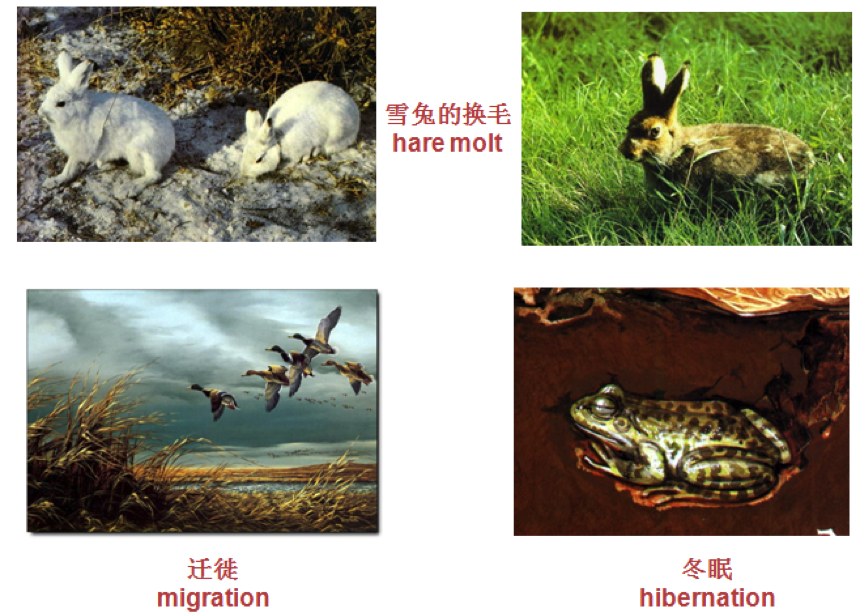
【经典讲座】:TPO20 Lecture 4 Snowshoe Hare 雪兔
【词汇小结】:
节律行为Rhythmic Behavior
潮汐节律tidal rhythm
月节律lunar rhythm
日节律daily rhythm
年节律circannual rhythm
昼行的 diurnal
夜行的 nocturnal
迁徙 migrate
冬眠 hibernate
洄游产卵的 anadromous
三文鱼 salmon
两栖类动物amphibian
爬行类动物reptile
雪兔 snowshoe hare
蝙蝠 bat
蝴蝶 butterfly
牡蛎 oyster
社群行为Social Behavior是同种动物之间维持群体共同生存的行为。这些行为并不只是简单聚集,而是群体的分工合作,使各个成员的行为互相协调配合,完成一定的共同活动。同群个体间具有一定的交往形式和复杂的通讯联系。比如在蚂蚁社群内,工蚁负责筑巢、觅食和喂养雌、雄、兵,兵蚁负责保卫蚁穴和切割食物,雄蚁负责与雌蚁交配,雌蚁则负责繁殖后代。群体内部形成一定的组织,群体成员有明确的分工,成员间有等级之分,群内的信息通过声音、动作、气味等传递。再比如,在蜜蜂社群内,工蜂具有极复杂的行为,可借助于舞蹈给蜂箱中的其他工蜂传递信息,告之其他工蜂花粉和花蜜产地离蜂箱的方位和距离。例如当发现新蜜源地后,它会飞回蜂箱附近跳一种圆圈舞或8字舞。圆圈舞表示新发现的蜜源地离蜂箱大约50 m以内,如果距离超过了50 m,侦察蜂就会跳8字舞。8字舞实际上是左右两个圈,在两圈相接处要走一条直线,当走直线时还要左右摆尾(又叫摆尾舞waggle dance),而摆尾的频率则用于表示蜜源地与蜂箱的距离远近。动物的社群行为使得他们可以依靠集体的力量从而更容易获取食物和战胜天敌。
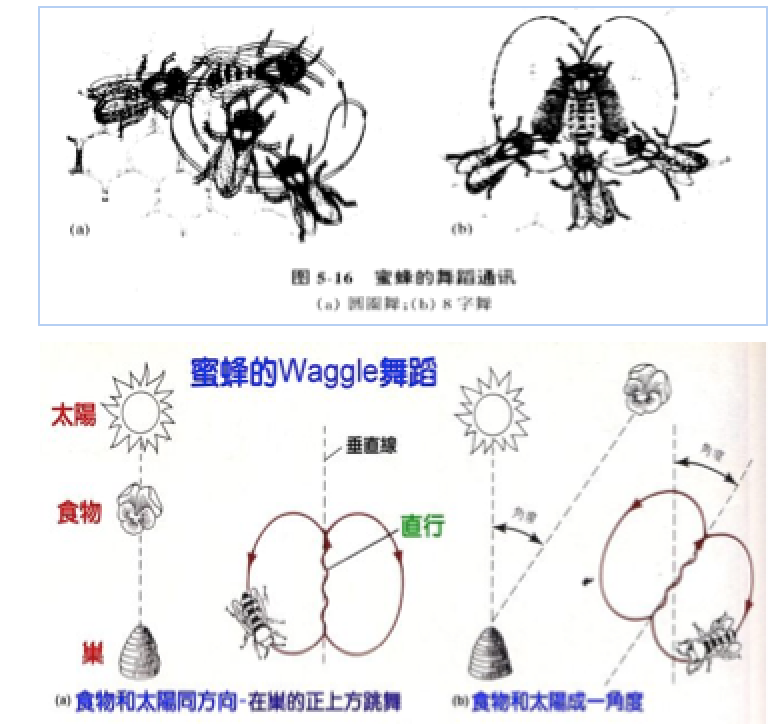
以上这些动物行为,有些是对个体有利的,有些则是对个体有害的,但是从从进化角度来讲,它们最终都是有利于整个族群的生存和繁衍的,因而会被保留和传递给下一代。
【经典讲座】:TPO46 Lecture 1 Swarm Intelligence 集群智能
【词汇小结】:
社群行为Social Behavior
摆尾舞waggle dance
蚂蚁 ant
蜜蜂 honey bee
英语高能高分·就上新航道
400-009-9696
【附录】
TPO中跟动物及动物行为相关的讲座(28篇):
TPO1 Lecture 4 Marmots 两种土拔鼠的生活习性
TPO3 Lecture 1 Humming Birds 蜂鸟栖息地的减少
TPO4 Lecture 1 Displacement Activity 动物的转移行为
TPO7 Lecture 2 Bats’ Use of Ultrasound 蝙蝠对超声波的利用
TPO8 Lecture 1 Activity Habitat Selection 动物的选择栖息地行为
TPO10 Lecture 1 Whales 鲸鱼的进化史
TPO11 Lecture 1 Distraction Display 鸟类的护雏方式
TPO14 Lecture 2 Microclimate 微气候
TPO16 Lecture 3 Foraging Behavior Among Bea 河狸的觅食行为
TPO17 Lecture 4 Octopus 章鱼的自卫手段
TPO18 Lecture 4 North American Wood Frog 北美林蛙
TPO20 Lecture 4 Snowshoe Hare 雪兔
TPO21 Lecture 3 Evolution Theory 进化论
TPO22 Lecture 3 Pleistocene Rewilding 还原更新世的生态系统
TPO23 Lecture 3 Dolphin’s Navigation 海豚是如何导航的
TPO24 Lecture 1 Crocodile Vocalization 鳄鱼的发声
TPO25 Lecture 1 Assisted Migration Conservation 受助式迁徙
TPO25 Lecture 4 Play 动物的玩耍行为
TPO27 Lecture 1 Coral Reefs Marine 珊瑚礁的保护
TPO27 Lecture 3 Sauropod 蜥脚类动物
TPO28 Lecture 2 Mirror Self-Recognition 鸟类的自我认知能力
TPO31 Lecture 3 CoT Starfish 刺冠星鱼
TPO 31 Lecture 4 Domesticated Animals 驯化动物
TPO33 Lecture 3 Notothenioids 南极鱼
TPO46 Lecture 1 Swarm Intelligence 集群智能
TPO47 Lecture 2 Albatross 信天翁
TPO48 Lecture 3 Symbiotic Relationship 共生关系
TPO49 Lecture 3 Reindeer 驯鹿
【动物类词汇补充】
zoology 动物学
biology [baɪ'ɔlədʒi] n. 生物学
【频】59
【例】TPO1 L4 Listen to part of a lecture in a biology class.
【衍】microbiology [ˏmaɪkrobaɪ'ɔlədʒi] n. 微生物学
marine biology 海洋生物学
【频】44
【例】TPO31 C2 I am pretty sure those other students are doing the internship at the center's aquarium,taking classes in marine biology and then teaching visitors about the various displays.
【衍】entomology [ˏentə'mɔlədʒi] n. 昆虫学,ornithology [ˏɔrnɪ'θɔlədʒi] n. 鸟类学,cell biology [sel-bai'ɔlədʒi] n. 细胞生物学,biochemist ['baiəu'kemist] n. 生物化学家
reptile ['reptail] n. 爬行动物
【频】18
【例】TPO14 L2 A lot of reptiles use burrows or stay under rocks to cool down.
【衍】amphibian [æm'fibiən] n. 两栖动物
paleontologist ['peiliɔn'tɔlədʒist] n. 古生物学者
【频】12
【例】TPO30 L2 Many paleontologists, myself included, have wondered about other similarities between dinosaurs and birds.
creature ['kri:tʃə] n. 生物
【频】10
【例】TPO17 L4 And that's the octopus, one of the unusual creatures that live in the sea.
organism ['ɔ:gənizəm] n. 有机物,微生物
【频】8
【例】TPO14 L2 If someone on a hike knocks a couple of rocks over, they could be unwittingly destroying a microclimate that an animal or organism relies on.
plankton ['plæŋktən] n. 浮游生物
【频】8
【例】TPO31 L3 Phytoplankton are microscopic plants that grow in the ocean.
invertebrate [in'və:tibrət] n. 无脊椎动物
【频】7
【例】TPO25 L1 People aren't even required to seek permits to move plants or invertebrate animals around as long as they are not classified as pests.
【衍】vertebrate ['və:təbrɪt] n. 脊椎动物
herbivore ['hə:biˏvɔ:] n. 食草动物
【频】5
【例】TPO3 L3 Most Paleolithic cave art depicts large herbivores.
【衍】herbivorous [hə:'bivərəs] a. 食草的、草食的,carnivore ['kɑrnɪvɔr] n. 食肉动物,omnivorous [am'nivərəs] a. 杂食的
mollusk ['mɔləsk] n. 软体动物
【频】5
【例】TPO3 L2 He might take a clip of a mollusk going up and down in the water and set it to music.
【衍】ruminant ['ru:minənt] n. 反刍动物,land creature 陆地生物
cold blood animal 冷血动物
【频】4
【例】TPO14 L2 So cold blood animals, like reptiles, they can't control their own body temperature, so I can image the effect of microclimate would have on them.
【衍】warm blood animal暖血动物
mammal ['mæməl] n. [脊椎] 哺乳动物
【频】4
【例】TPO10 L1 Ambulocetus is a mammal that shows a sort of bridge between walking on land and swimming.
【衍】primate ['praɪmɪts] n. 灵长目动物
breed [bri:d] v. 养育,繁殖n. 品种
【频】2
【例】TPO6 L1 Tulips were beginning to show up in different colors as growers tried to breed them specifically for colors which would make them even more valuable.
community [kə'mjunɪti] n. 动物的群落或人的部落
【频】2
【例】TPO15 L4 We've been talking till now about the two basic needs of a biological community – an energy source to produce organic materials.
herd [hɝd] n. 兽群
【频】1
【例】TPO22 L1 But when you have a large population, well, the whole population can’t just get up and move to follow a wild herd of animals.
【衍】flock [flɔk] n.(牛、羊等)群,hordes/swarms [hɔrd]/[swɔrm](昆虫等)群
weather ['weðə] n. 天气
【频】1
【例】TPO1 L4 The Olympic marmots inhabit meadows high in the Olympic Mountains where the weather conditions are much harsher.
climate ['klaimit] n.气候
【频】1
【例】TPO15 L2 Because the climate changed, the types of plants and animals hanged also.
microclimate ['maikrəuˏklaimit] n. 小气候
【频】1
【例】TPO14Ll2 A microclimate is a group of climate conditions that affect the localized area, weather features like temperature, wind, moisture and so on.
harsh [hɑ:ʃə] a.(气候)恶劣的
【频】1
【例】TPO11 L2 The wind was one reason, nothing sticking out might blow away in the harsh weather.
primitive ['primitiv] a. 远古的
【频】1
【例】TPO5 L2 So are you saying there might be primitive life on the moon?
hibernation [ˏhaibə'neiʃən] n. 冬眠
【频】1
【例】TPO1 L4 Now when they emerge in the spring from hibernation, the mating process begins.
burrow ['bʌrəu] n. 洞穴 v. 掘洞穴, 掘, 打洞
【频】1
【例】TPO9 L4 They're a type of rodent who, who burrow in the ground in the grasslands of the western United States and Mexico.
territorial [ˏteri'tɔ:riəl] a. 领地的
【频】1
【例】TPO1 L4 They are not at all aggressive and territorial like the Eastern marmots.
考过的动物:
whale [hweil] n. 鲸鱼
【频】38
【例】TPO10 L1 Because until recently there was no fossil record of what we call “"the missing link"- that is evidence of species that show the transition between land-dwelling mammals and today's whales.
coral ['kɔrəl] n. 珊瑚
【频】38
【例】TPO27 L1 So we have been fairly thorough in our discussion about coral reefs, which of course are prominent, oceanic features made of hard limestone skeletons produced by tiny coral animals.
snake [sneik] n. 蛇
【频】37
【例】TPO14 L2 Some snakes will search out a place under rocks of a specific thickness, because too thin a rock doesn't keep them cool enough, and too thick a rock will cause them to get too cold.
dinosaur ['dainəsɔ:] n. 恐龙
【频】31
【例】TPO22 L3 A mass extinction as when numerous species become extinct over a very short time period, short, geologically speaking that is, like when the dinosaurs died out 65 million years ago.
bear [bɛə] n. 熊 v. 忍受,承受
【频】29
【例】TPO3 L3 These paintings were made deep inside a dark cave, where no natural light can penetrate. There's no evidence of people ever living here. Cave bears, yes, but not humans.
beaver ['bi:və] n. 海狸
【频】27
【例】TPO13 L2 Beavers live near streams and rivers and they block up the streams
and rivers with like logs and sticks and mud.
dolphin ['dɔlfin] n. 海豚
【频】23
【例】TPO23 L3 Most of the fat that you find in an animal's body is used for storing energy, but this fat, which you find in dolphins, and only in the melon and around the lower jaw.
bat [bæt] n. 蝙蝠
【频】21
【例】TPO7 L2 Well, bats, since they are all blind, bats have to use sound for, you know, to keep from flying into things.
starfish ['stɑrˏfɪʃ] n. 海星
【频】20
【例】TPO31 L3 There are fish and snails that eat starfish, particularly the giant triton snail, which is the main predator of the starfish.
frog [frɔg] n. 青蛙
【频】20
【例】TPO18 L4 Now the wood frog's not that easy tosspot since it stays pretty to close to the ground, under leaves and things and it blends in really well with its background as you can see.
marmot ['mɑ:mət] n. 土拨鼠
【频】19
【例】TPO1 L4 And even though they spend the significant portion of the year hibernating, according to this case study, marmots are still considered excellent subjects for animal behavioral studies.
humming bird ['hʌmiŋbə:d] n. 蜂鸟
【频】16
【例】TPO3 L1 Now you know a humming bird is amazingly small, but even though it's really tiny, it migrates over very long distances, travels up and down the western hemisphere – the Americas, back and forth between where it breeds in the summer and the warmer climates where it spends the winter.
octopus ['ɔktəpəs] n. 章鱼
【频】16
【例】TPO17 L4 The octopus is prey to many species, including humans, so how does it escape its predators?
venomous snake ['venəməs][sneik] n. 有毒的蛇
【频】12
【例】TPO21 L3 As the different families of venomous snakes evolved, the teeth moved forward, becoming larger, and the venom becoming stronger, so the evolution of the obvious venomous snakes, like cobras and vipers, is about the evolution of an efficient delivery system, not so much the evolution of the venom itself.
elephant ['elifənt] n. 大象
【频】12
【例】TPO6 L4 Anyway, it's this fossilized pollen along with the aquifers and the rock paintings, these three things are all evidence that the Sahara was once much greener than it is today, that there were hippos and probably elephants and giraffes and so on.
jellyfish ['dʒelifiʃ] n. 水母
【频】12
【例】TPO26 C2 Some jellyfish produce bright flashes of light that confuse predators, to, uh, to startle them.
wolf [wulf] n. 狼
【频】11
【例】TPO25 L4 Like wolves, the young pups, they fight a lot and bite, you know, not to hurt each other, but ... It just seems obvious why those wolf pups play like that. It gives them practice with skills that will make them better hunters or fighters as adults.
alligator ['æligeitə]= crocodile ['krɔkədail] n. 鳄鱼
【频】11
【例】TPO24 L1 This is true of the whole crocodile family, which includes crocodiles themselves, alligators, etc.
mammoth ['mæməθ] n. 猛犸象,长毛象
【频】10
【例】TPO17 L1 This sculpture is called the Lady with the Hood, and it was carved from ivory, robably a mammoth's tusk.
cattle ['kætl] n. 牛
【频】9
【例】TPO31 L4 Since sheep and cattle can't survive harsh climates, they needed to be taken south every winter.
colubrid ['kɔləbrɪd] n. 无毒蛇类
【频】7
【例】TPO21 L3 Another family of snakes, the colubrids, don't really fit neatly into either category though. Colubrids, and you probably learned this too, although they are often classified as venomous snakes, they are actually generally non-venomous.
rabbit ['ræbit] n. 兔子
【频】6
【例】TPO20 L4 Although I probably should mention that technically a hare is not exactly the same as a rabbit, even though it is very similar .
squirrel ['skwirəl] n. 松鼠
【频】6
【例】TPO14 L2 There is a species of squirrel, in the Western part of the United States that can get really hot
when they were out foraging for food.
snail [sneil] n. 蜗牛
【频】5
【例】TPO27 L1 Well all of these creatures feed on snails, worms and other organisms that eat coral.
cheetah ['tʃitə] n. 猎豹
【频】5
【例】TPO22 L3 When the American cheetahs disappeared, their influence on the evolution of pronghorn and presumably on other prey animals stopped.
antelope ['æntɪlop] n. 羚羊
【频】4
【例】TPO22 L3 So it is conceivable that the pronghorn antelope would have continued to evolve, get faster maybe, if the cheetahs were still around.
lizard ['lizəd] n. 蜥蜴
【频】4
【例】TPO21 L3 Professor Probably back in some previous biology course you learned that snakes evolved from lizards, and that the first snakes weren't venomous and then along came more advanced snakes, the venomous snakes.
crow [krəu] n. 乌鸦
【频】4
【例】TPO28 L2 Corvids include ravens, jays, crows and magpies among others.
pigeon ['pidʒin] n. 鸽子
【频】2
【例】TPO28 L2 So these researchers basically trained some pigeons to pass the mirror mark test.
hippopotamuse [ˏhipə'pɔtəməs] n. 河马
【频】2
【例】TPO6 L4 And what I find particularly interesting... amazing really, what really indicates how undesert-like the Sahara was thousands of years ago, was something painted on the rock, prehistoric art, hippopotamuses, as you know hippos need a lot of water and hence?
【衍】hippo ['hipəu] n. 河马
rodent ['rəudənt] n. 啮齿动物
【频】2
【例】TPO9 L4 Prairie dogs are not actually dogs. They're a type of rodent who, who burrow in the ground in the grasslands of the western United States and Mexico.
beast [bist] n. 野兽
【频】2
【例】TPO4 L3 Between 11,000 and 10,000 B.C.E., North America was populated by a wide variety of great beasts, like mammoth and mastodons, both elephant-like creatures with big tusks, and camels, giant sloths, the list goes on.
bison ['baisn] n. 美洲野牛
【频】2
【例】TPO3 L3 Horses are most common overall with deer and bison pretty common too, probably animals they hunted.
camel ['kæməl] n. 骆驼
【频】2
【例】TPO22 L3 So, as a way of repairing some of that damage, a group of conservation biologists has proposed an ambitious, or some might say, a radical plan, involving large vertebrates, or , megafauna. Megafauna include elephants, wild horses, big cats, camels, large animals.
hawk [hɔ:k] n. 鹰
【频】1
【例】TPO9 L4 Prairie dogs may be able to tell you about a hawk that's circling overhead right now, but they never show any inclination to describe the one they saw last week.
【衍】eagle ['i:gl] n. 鹰,owl [aul] n. 猫头鹰
songbird ['sɔŋbə:d] n. 鸣禽
【频】1
【例】TPO8 L1 The Blue warbler is a songbird that lives in North America.
clam [klæm] n. 蛤
【频】1
【例】TPO9 L3 Interestingly, there are clams and snail shells; but, no fossils of fish. We're not sure why. Maybe there was a problem with the water.
rhinocero [rai'nɔsərəs] n. 犀牛
【频】1
【例】TPO3 L3 But earlier at Chauvet, there is a significant interest in large dangerous animals, lots of rhinoceros, lions, mammoth, bears.
deer [diə] n. 鹿
【频】1
【例】TPO3 L3 Horses are most common overall with deer and bison pretty common too, probably animals they hunted.
buffalo ['bʌfələu] n. 水牛
【频】1
【例】TPO9 L3 At older lake sites, there's fossil remains from hippopotamuses, water buffalo, animals that spend much of their lives standing in water, and also, fossils of cattle.
sponge [sloθ] n. 海绵
【频】1
【例】TPO13 L2 Think of wetlands as, Umm, like a giant sponge, the earth soaks up a lot of this water that's continually flooding the surface, which increases the amount of water below.
insect ['insekt] n. 昆虫
【频】1
【例】TPO25 L1 The cane toad was introduced back in 1935 to control an insect pest that was destroying Australia's sugarcane plantations.
【衍】bug [bʌɡ] n. 虫子,worm [wɝm] n. 虫/蠕虫,caterpillar ['kætəpilə] n. 毛虫,pest [pest] n. 害虫
moth [mɔθ] n. 飞蛾
【频】1
【例】TPO21 L2 When they examined it, they found a five-centimeter long moth caught in there.
butterfly ['bʌtəflai] n. 蝴蝶
【频】1
【例】TPO19 C1 Oh, like, non-poisonous butterflies, that have come to look like poisonous ones.
rat [ræt] n. 鼠
【频】1
【例】TPO6 L2 Then there's a kind of rat that likes to feed on the seeds as well.
【衍】mouse [maus](复数mice)n. 鼠
3.2 Animal Behavior 动物行为
habitat ['hæbitæt] n. 息地
【频】51
【例】TPO33 L3 The species migrated into different habitats throughout the southern ocean.
predator ['predətə] n. 捕食者
【频】36
【例】TPO11 L1 Because if the predator doesn’t know you are there, it is not going to try to eat you.
spread [spred] v. 扩散,传播
【频】28
【例】TPO26 L3 And some of the ice vaporizes into gas and spreads out from the nucleus.
active [æktiv] a. 主动的
【频】16
【例】TPO8 L1 With active habitat selection, an organism is able to physically select where to live and breed.
prey [prei] n. 被捕食者
【频】14
【例】TPO17 L4 The octopus is prey to many species, including humans, so how does it escape its predators?
reproduce [ˏri:prə'dju:s] v. 繁殖
【频】12
【例】TPO5 L1 But the alligators would escape and find their way into the New York sewer system where they started reproducing, grew to huge sizes and now strike fear into sewer workers.
shield [ʃi:ld] v. 防御,保护 n. 盾
【频】11
【例】TPO24 L4 They are called shield volcanoes, because viewed from above, they kind of resemble shields, you know, like a warrior's shield.
forage ['fɔridʒ] v. 觅食
【频】10
【例】TPO14 L2 For instance, there is a species of squirrel, in the Western part of the United States that can get really hot when they were out foraging for food.
flexible ['fleksəbl] adj. 柔韧的
【频】9
【例】TPO25 L4 Apparently, it also contributes to the development of a brain that's flexible, a brain that's quickly able to get a handle on unfamiliar situations.
stretch [stretʃ] n. 伸展
【频】8
【例】TPO15 L3 And the material typically used for the pages was parchment, which is animal skin that stretched and dried under tension.
grooming ['gru:miŋ] n. 整理(羽毛)
【频】8
【例】TPO4 L1 So, the displacement activity, the grooming, the straightening of its feathers, seems to be an irrelevant behavior.
circumstance ['sə:kəmstəns] = environment [in'vaiərənmənt] n. 环境
【频】6
【例】TPO19 C1 Basically, it uses math to predict what an individual would do under certain circumstances.
domesticate [də'mɛstɪˏket] v. 驯养
【频】6
【例】TPO22 L1 They usually hunt together and forage whatever foods are available to them, instead of domesticating animals and planting crops.
offspring ['ɔfˏspriŋ] n. 后代
【频】6
【例】TPO1 L4 Then about six to eight weeks after birth, the offspring leave their mothers.
eliminate [i'limineit] v. 除去
【频】5
【例】TPO22 L3 Since the Stone Age, humans have been eliminating species and altering ecosystems with astounding speed.
passive ['pæsiv] a. 被动的
【频】4
【例】TPO12 L4 Passive systems take advantage of the location or design of a house.
hatchling ['hætʃliŋ] n. 刚孵化的幼体
【频】4
【例】TPO24 L1 Let's see. New-born crocodiles, or hatchlings and their interactions with their mothers.
communal ['kɔmjunl] adj. 群居的
【频】3
【例】TPO5 L4 By communal, we mean they reflect the traits and the concerns of a particular community at a particular time.
nomadic [nəʊ'mædɪk] adj. 游牧的;流浪的
【频】3
【例】TPO22 L1 In order to efficiently take advantage of the wild foods available, bands are often nomadic and move around following herds of animals.
diving ['daɪvɪŋ] n. 潜水 / 跳水
【频】3
【例】TPO25 C2 When a whale dives, its metabolic rate drops, causing its heartbeat to slow down.
mate [meit] n. 交配
【频】3
【例】TPO1 L4 They reside throughout the eastern region of North America where there is a temperate climate, where the growing season lasts for at least five months of the year, which is when they do all their mating, playing and eating.
stimulus ['stimjuləs] n. 刺激
【频】3
【例】TPO10 L4 Of course he didn’t claim that infants don’t have any sort of memory, it is acknowledged that they can recognize some stimuli, like faces.
pursue [pə'sju:] v. 追捕, 追击
【频】3
【例】TPO21 C2 This way, you’ll find out if marketing is something you really want to pursue.
recreate ['rekrieit] v. 再建(栖息地)
【频】2
【例】TPO8 L1 So conservationists tried to recreate a new habitat for them.
solitary ['sɔlɪtərɪ] adj. 独居
【频】2
【例】TPO24 L1 Now, we tend to think of crocodiles as, uh, kind of solitary, hiding out in a swamp, uh, kind of mysterious creatures.
hibernate ['haɪbɚnet] n. 冬眠;蛰伏
【频】2
【例】TPO1 L4 And even though they spend the significant portion of the year hibernating, according to this case study, marmots are still considered excellent subjects for animal behavioral studies.
camouflage ['kæməflɑːʒ] v. 伪装,掩饰,保护
【频】2
【例】TPO8 L1 It blends in with the sand, so it’s well-camouflaged from predator birds above.
incubate ['inkjə'beit] v. 孵化
【频】1
【例】TPO30 L2 Well, some reptiles incubate their eggs, crocodiles do.
fledgling ['fledʒliŋ] n. 雏鸟
【频】1
【例】TPO8 L1 So if there are people or dogs on the beach, the eggs and fledglings in the nests are really vulnerable.
托福快讯
- 最新雅思托福成绩换算表发... 2025-07-15
- 官方深度合作动态:ETS与... 2025-06-26
- 从托福变革看英语教学,在... 2025-06-25
- 思维训练,托福写作提分的... 2025-06-24
- 精细陪伴,量身定做的托福... 2025-06-24

